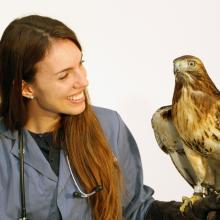On her cross-country travels to Vancouver Island, externship blogger Roxana visited a number of veterinary practices from Ontario to B.C. Here’s who she met along the way…
First stop, the Northwestern Veterinary Hospital in Thunder Bay.
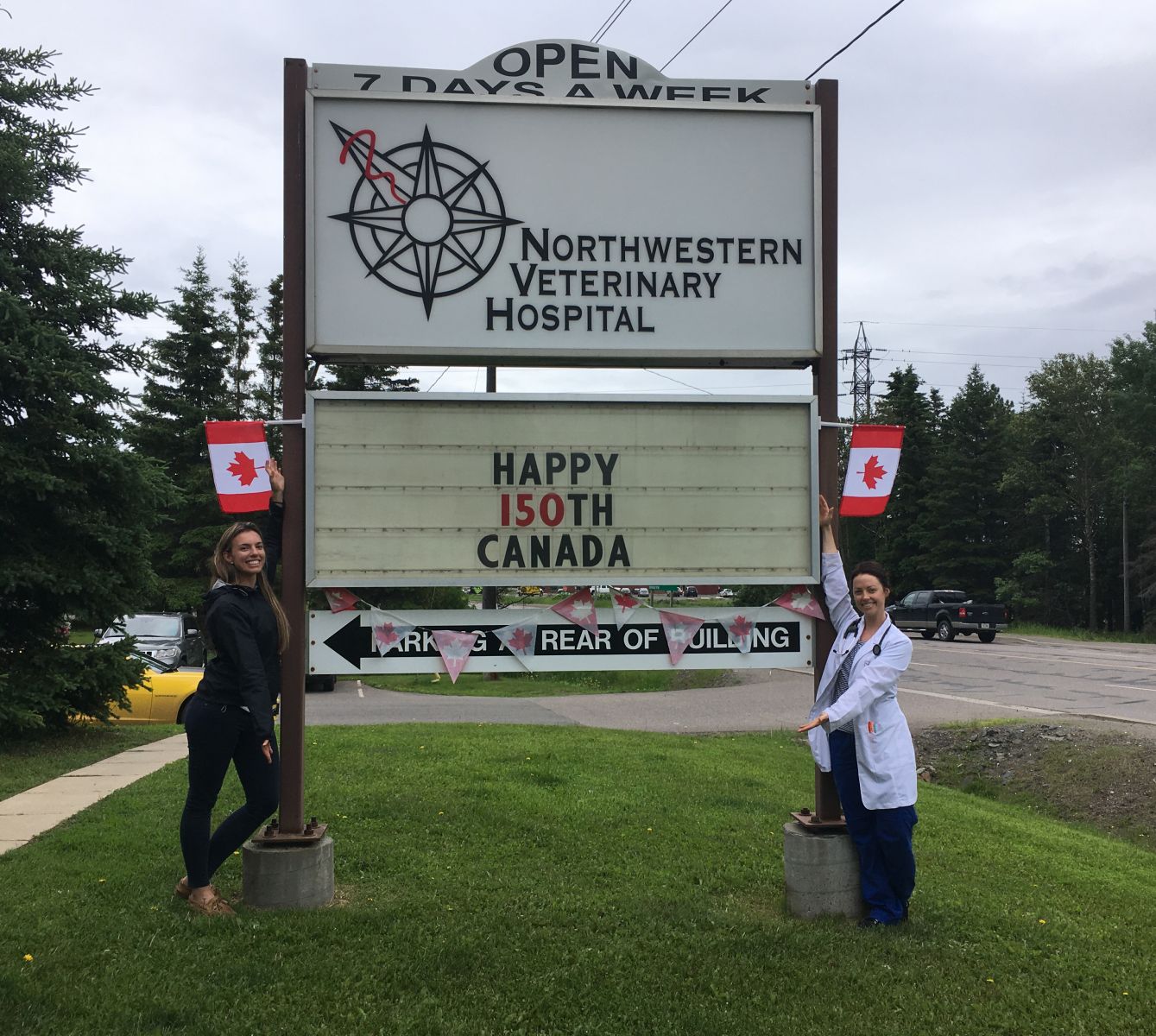
Dr. Thompson's fondest memory of OVC was “having a close-knit practice group and going through vet school surrounded by these people, who become your close friends and family away from home, supporting you through everything along the way.”

What is one piece of advice you would give to a final year student in any veterinary program?
“Try to enjoy the long hours during rotations, especially during the tough rotations, and take everything in that you can. In addition, try to gain as much practical experience as possible during those rotations, especially learning how to interact with clients, because that is what you will be doing everyday out in practice.”
Next up: Norsask Veterinary Group, Warman Veterinary Clinic, a mixed animal practice in Warman, Saskatachewan
Dr. Jesse Vargo graduated from Western College of Veterinary Medicine in 2015, and Dr. Andrea Petruka graduated in 2008, also from the Western College of Veterinary Medicine.
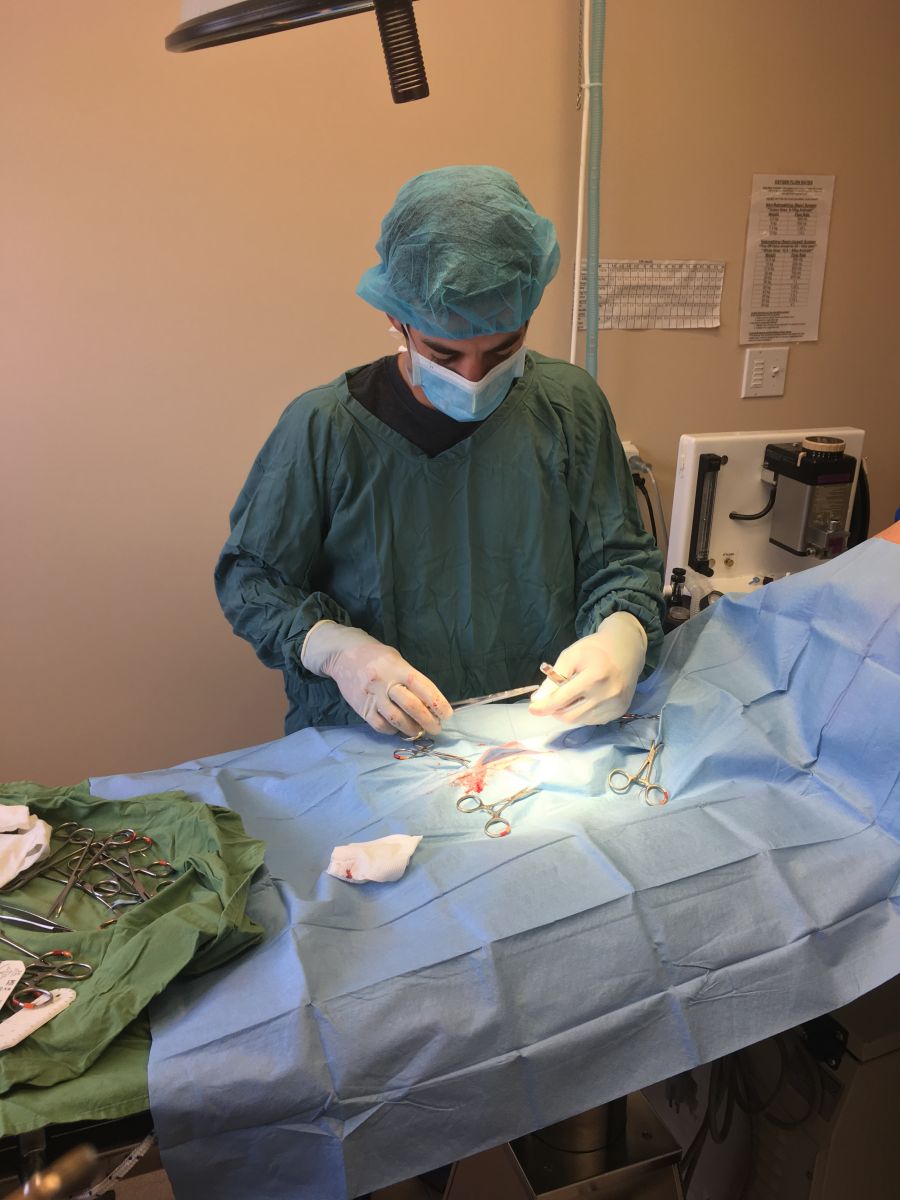
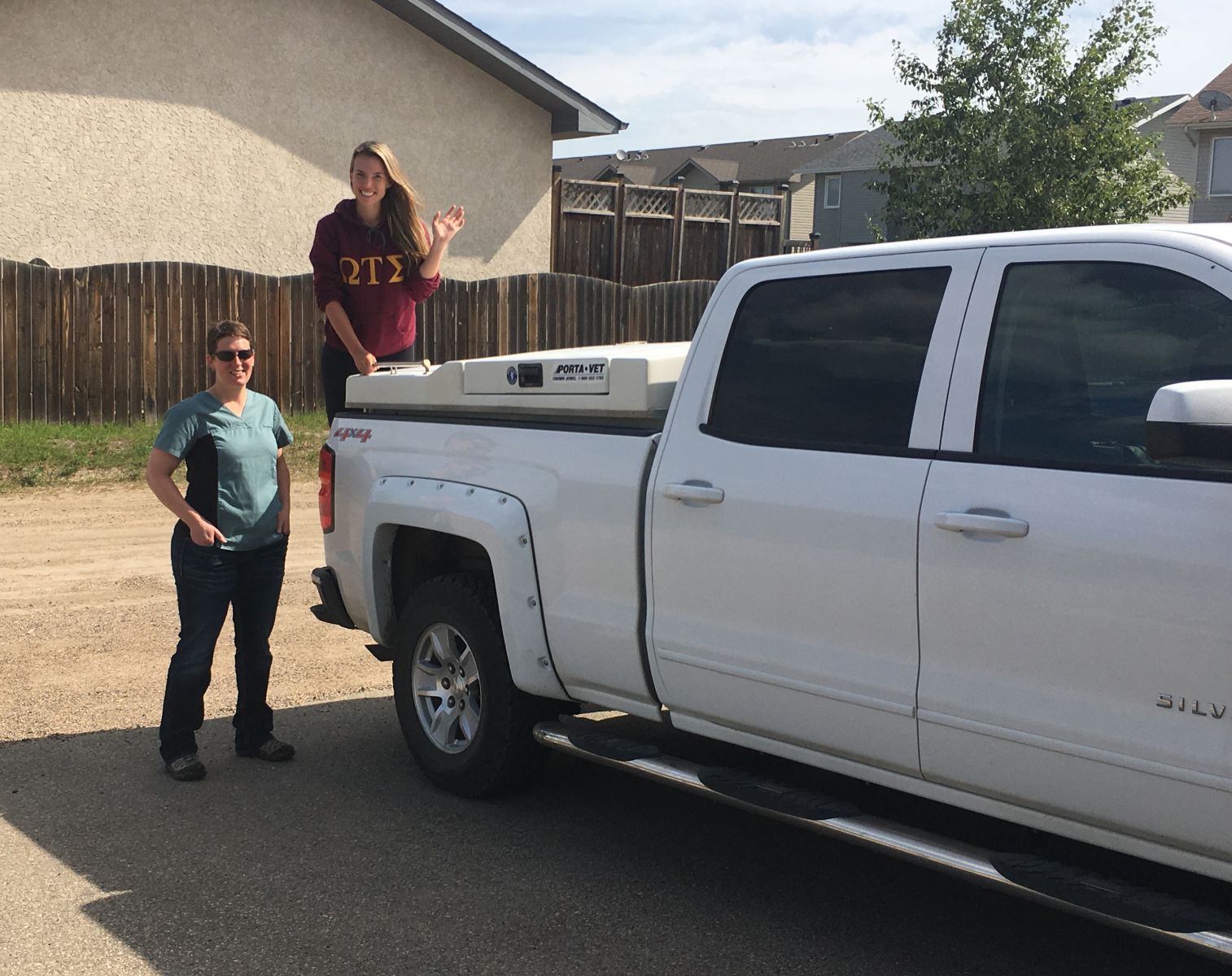
Pulling a horse from a well, successfully! Take note that here, he is doing a cat spay but grew up on a farm; truly a mixed animal practice at Warman where he does both large and small animal medicine.
Dr. Petruka: What is one thing you would tell a new graduate entering the veterinary profession?
“Be open to new experiences; you may not be a specialist in a certain species, but you should go out of your comfort zone (especially in mixed practice) - it can build you and make you more successful! (We took a picture in the back of the clinic pick-up truck, which is a field truck equipped with everything you would need for both surgery and medicine for large animals in the field).
Next stop, the Western College of Veterinary Medicine (WCVM) in Saskatoon, Saskatchewan
 Dr. Andrew Allen is a professor in Anatomic Pathology at the WVCM. He is a WCVM Alumni, and graduated in 1987. He also contributes to the necropsy and biopsy services offered by Prairie Diagnostic Services, Inc., and consults with veterinarians, livestock producers, and pet owners. When asked why he chose a speciality in pathology, he explained that after entering general practice, it could be frustrating to not always have the opportunity to run diagnostics people were willing to pursue. Pathology gives the opportunity to investigate causes at the root of the problem
Dr. Andrew Allen is a professor in Anatomic Pathology at the WVCM. He is a WCVM Alumni, and graduated in 1987. He also contributes to the necropsy and biopsy services offered by Prairie Diagnostic Services, Inc., and consults with veterinarians, livestock producers, and pet owners. When asked why he chose a speciality in pathology, he explained that after entering general practice, it could be frustrating to not always have the opportunity to run diagnostics people were willing to pursue. Pathology gives the opportunity to investigate causes at the root of the problem
When talking with Dr. Allen, he showed me a beautiful mural at the school, which was a perfect way to help celebrate Canada’s 150th year. This mural is a work of art by painter Jasyn Lucas and his partner Nicole Brightnose. The pair travelled from Thompson, Man., where they work as artists and operate an art gallery. Their painting’s purpose is to tell a story about Indigenous teachings using the animals that represent those lessons. Each spirit animal depicted in the mural represents one of the seven sacred grandfather teachings. The buffalo on the left of the mural represents respect, the turtle stands for truth, the wolf for humility and the eagle for love. The bear represents courage while the beaver stands for wisdom. One tiny figure is hidden in the trees – this final creature of the seven is not an animal, says Lucas, but a special shapeshifter that can come in several forms. Some know it as sasquatch, but he calls it a Sawbay or Sabe – which stands for honesty. This “trickster” character is a mischievous being that represents unexplained experiences.
It was a beautiful addition to the hallways of WCVM that I was lucky enough to see. (https://words.usask.ca/wcvm/2017/04/artists-bring-indigenous-knowledge-to-wcvm/)
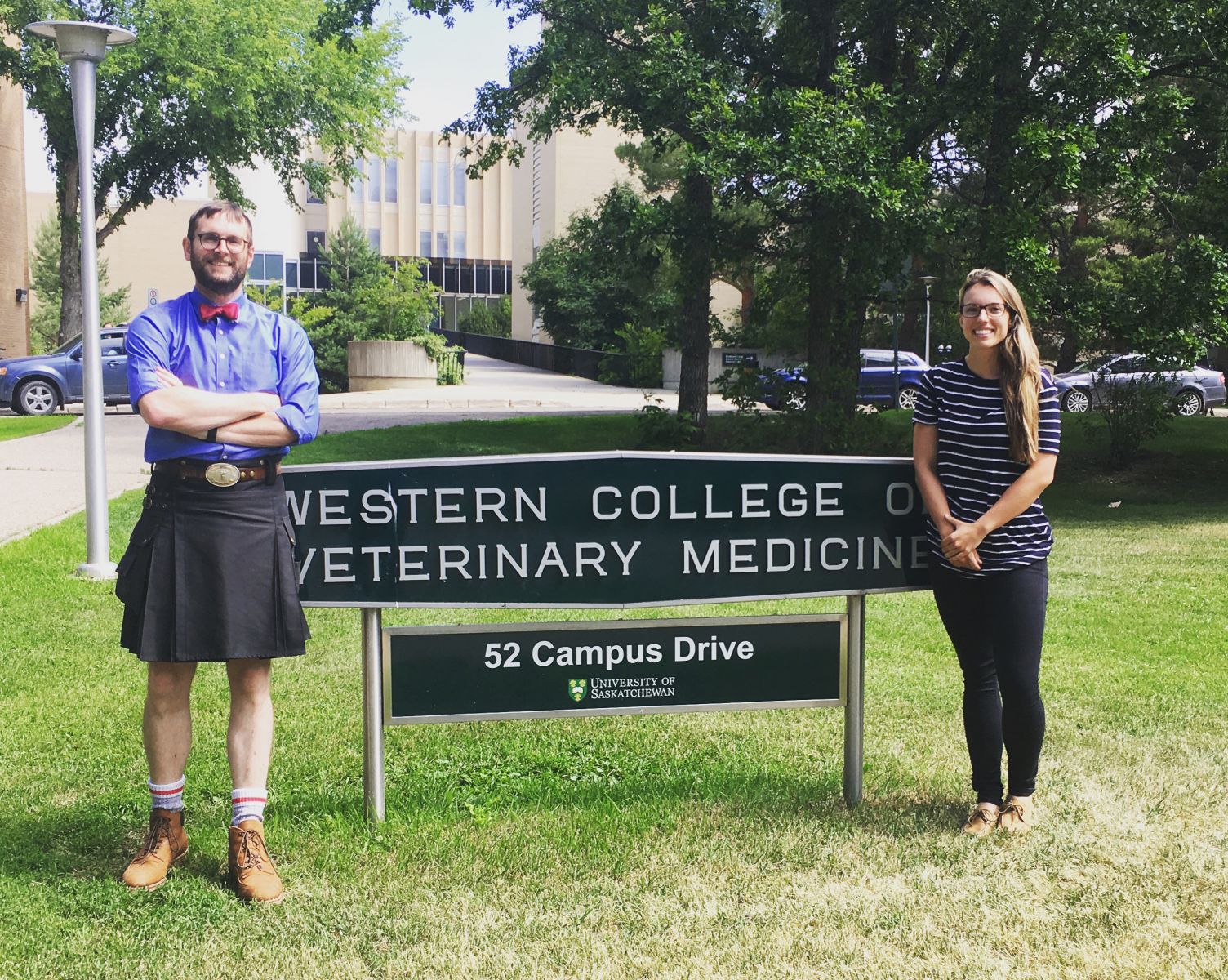 Dr. Chris Clark, the Associate Academic Dean at the Western College of Veterinary Medicine, earned his veterinary degree in 1996 from Cambridge University, and then completed a one-year clinical internship at the WCVM. After practising in northern England for a year, Clark returned to Saskatoon in 1998 and completed a large animal residency as well as MVetSc and PhD degrees in veterinary pharmacology. He joined the WCVM faculty in 2002. Prior to his role as Associate Academic Dean, Dr. Clark was one of four clinicians responsible for the supervision of the Large Animal Medicine service provided by the WCVM Veterinary Medical Centre. They deal with a wide variety of first opinion and referral cases of all large animals including cattle, horses, sheep, goats, alpacas and farmed game. In addition to clinical work, Dr. Clark also teaches large animal and general medicine. Over the years, his enthusiasm for teaching students has led to many teaching awards. When asked what he hopes to see in a graduating student, he replied that he would like to see someone who is ready to enter practice, and defining what that means for each person is the purpose of his career.
Dr. Chris Clark, the Associate Academic Dean at the Western College of Veterinary Medicine, earned his veterinary degree in 1996 from Cambridge University, and then completed a one-year clinical internship at the WCVM. After practising in northern England for a year, Clark returned to Saskatoon in 1998 and completed a large animal residency as well as MVetSc and PhD degrees in veterinary pharmacology. He joined the WCVM faculty in 2002. Prior to his role as Associate Academic Dean, Dr. Clark was one of four clinicians responsible for the supervision of the Large Animal Medicine service provided by the WCVM Veterinary Medical Centre. They deal with a wide variety of first opinion and referral cases of all large animals including cattle, horses, sheep, goats, alpacas and farmed game. In addition to clinical work, Dr. Clark also teaches large animal and general medicine. Over the years, his enthusiasm for teaching students has led to many teaching awards. When asked what he hopes to see in a graduating student, he replied that he would like to see someone who is ready to enter practice, and defining what that means for each person is the purpose of his career.
What was one thing you were afraid of when you first entered practice?
As a person who geared towards large animals, Dr. Clark admitted he was deathly afraid of pyometras (uterine infections). Who knew?!
And onto Alberta….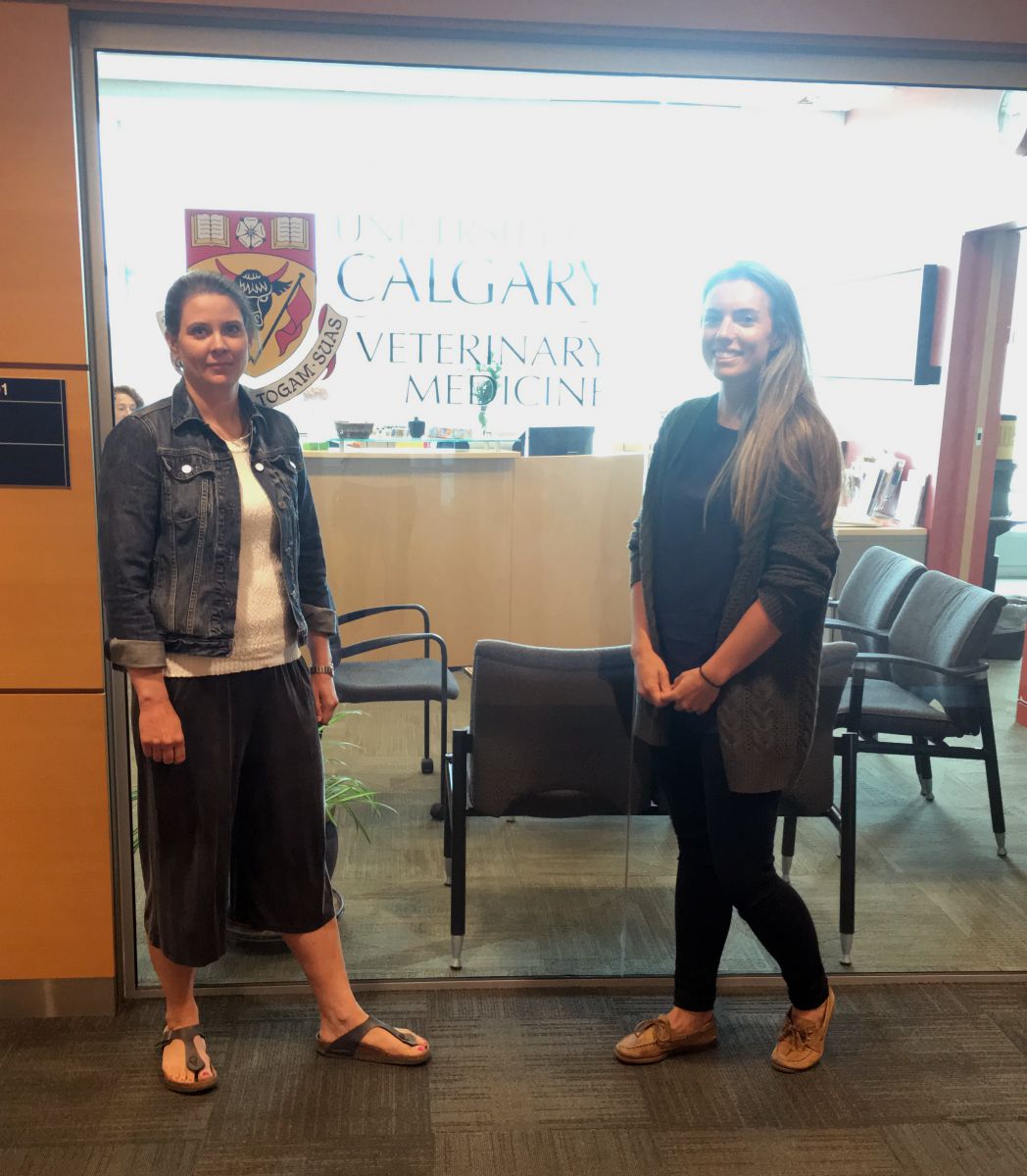 Dr. Chantal McMillan is a small animal internal medicine clinician at the University of Calgary College of Veterinary Medicine (UCVM). She graduated from the Western College of Veterinary Medicine in 2000, and always had a passion for physiology and medicine, which is what helped her decide to pursue a residency. Dr. McMillan joined UCVM in 2007 as a sessional instructor. She is now an Instructor in the Department of Veterinary Clinical and Diagnostic Sciences. She is involved with teaching in all years of the undergraduate curriculum. The clinical aspects of her appointment are fulfilled at Western Veterinary Specialists and Emergency Centre.
Dr. Chantal McMillan is a small animal internal medicine clinician at the University of Calgary College of Veterinary Medicine (UCVM). She graduated from the Western College of Veterinary Medicine in 2000, and always had a passion for physiology and medicine, which is what helped her decide to pursue a residency. Dr. McMillan joined UCVM in 2007 as a sessional instructor. She is now an Instructor in the Department of Veterinary Clinical and Diagnostic Sciences. She is involved with teaching in all years of the undergraduate curriculum. The clinical aspects of her appointment are fulfilled at Western Veterinary Specialists and Emergency Centre.
What do you enjoy about teaching?
“I enjoy seeing the fourth year student being able to apply the knowledge you have taught them – they apply it in a useful, clinical, manner, and that’s really rewarding for me to see.”
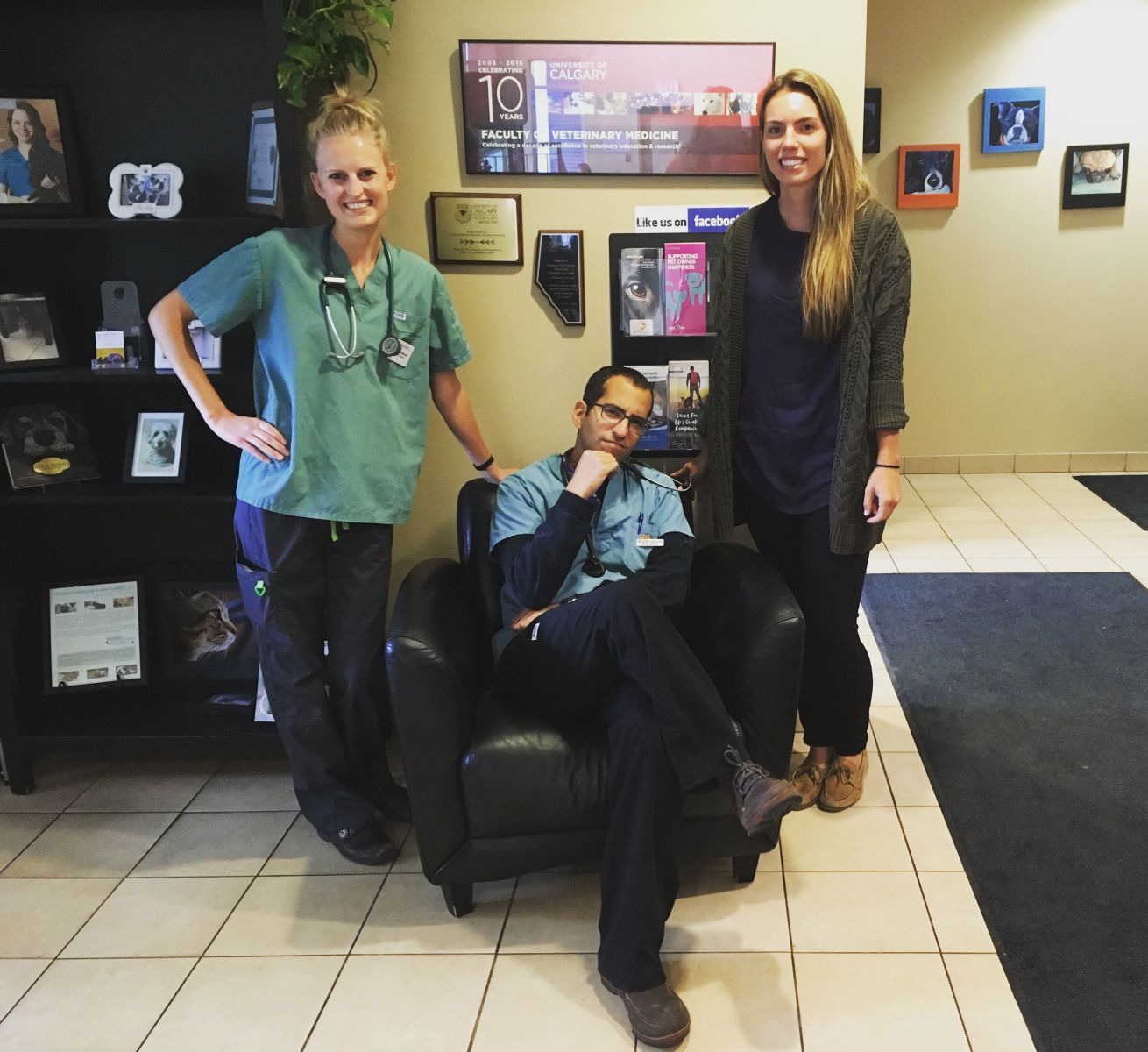 Dr. Serge Chalhoub is a small animal internal medicine clinician, and senior instructor in at the Western Vet Speciality and Emergency Centre in Calgary, Alberta. He graduated from Faculté de médecine vétérinaire at the Université de Montréal and completed his DVM in 2004, followed by an internship at this university. Dr. Chalhoub then practiced in Montreal as an emergency doctor for two years at the DMV Centre before moving to New York City to pursue a residency in small animal internal medicine at the Animal Medical Center. Once completed, he became their first ever nephrology/urology fellow and was trained in advanced urinary procedures, dialysis, and interventional medicine.
Dr. Serge Chalhoub is a small animal internal medicine clinician, and senior instructor in at the Western Vet Speciality and Emergency Centre in Calgary, Alberta. He graduated from Faculté de médecine vétérinaire at the Université de Montréal and completed his DVM in 2004, followed by an internship at this university. Dr. Chalhoub then practiced in Montreal as an emergency doctor for two years at the DMV Centre before moving to New York City to pursue a residency in small animal internal medicine at the Animal Medical Center. Once completed, he became their first ever nephrology/urology fellow and was trained in advanced urinary procedures, dialysis, and interventional medicine.
What is a piece of advice you would give to an intern or resident?
“Take deep breaths and enjoy the hell out of it; the stress will pass. Lean on others – you are never alone!”
Pictured on the right with Dr. Chalhoub is a fourth year student from UCVM on her internal medicine rotation, Molly Patterson. She works closely with Dr. Chalhoub and the other veterinarians and technicians at the practice. At UCVM, students rotate between several hospitals and the two main campuses to complete their mandatory clinical rotations in fourth year.
And one more visit in Alberta before heading off to British Columbia.
 Pictured with Dr. Dan Katz, a small animal veterinarian who graduated in 2016 from OVC as a Cobalt Caracal(and one of the 2016 Externship Bloggers). He now works at Fishcreek Animal Hospital in Calgary, Alberta.
Pictured with Dr. Dan Katz, a small animal veterinarian who graduated in 2016 from OVC as a Cobalt Caracal(and one of the 2016 Externship Bloggers). He now works at Fishcreek Animal Hospital in Calgary, Alberta.
When asked if he found it difficult to move away from home to start a career and what steps he took to find his way to the clinic he is at now, Dr. Katz responded: “I had always wanted to try living out west, and there was no better time in my life to give it a go since I had just graduated from OVC. I was looking for a very specific place to start my career - one with lots of people to bounce ideas off of (25 plus vets here at Fishcreek) and access to specialty services like medicine and surgery. I was hoping to get into a practice like this without having to do an internship, so I flew myself out to Alberta on my own dime to this interview... and somehow the stars aligned after that and here I am!”
Watch for more updates from Roxana as she shadows veterinarians during her externship.
